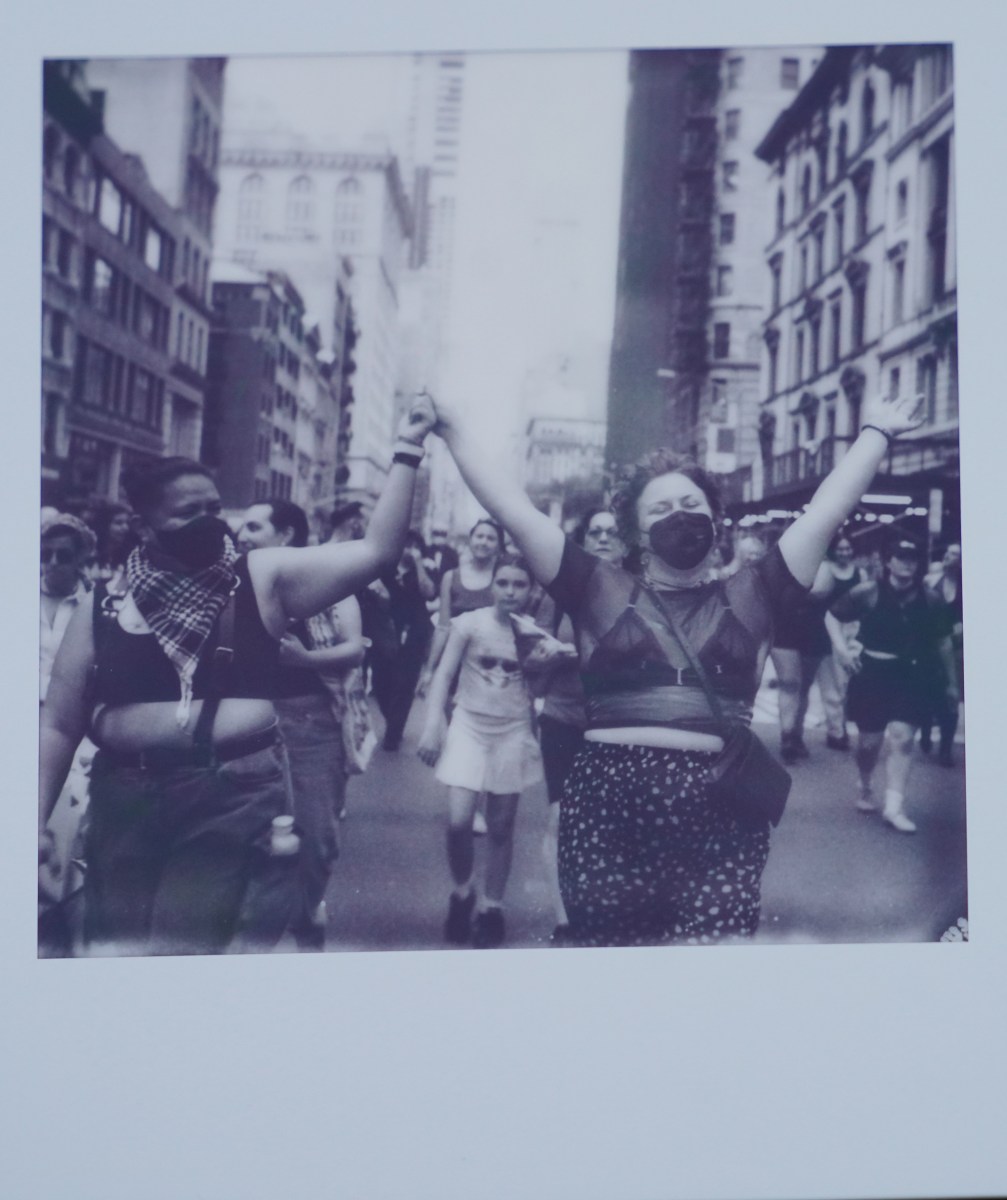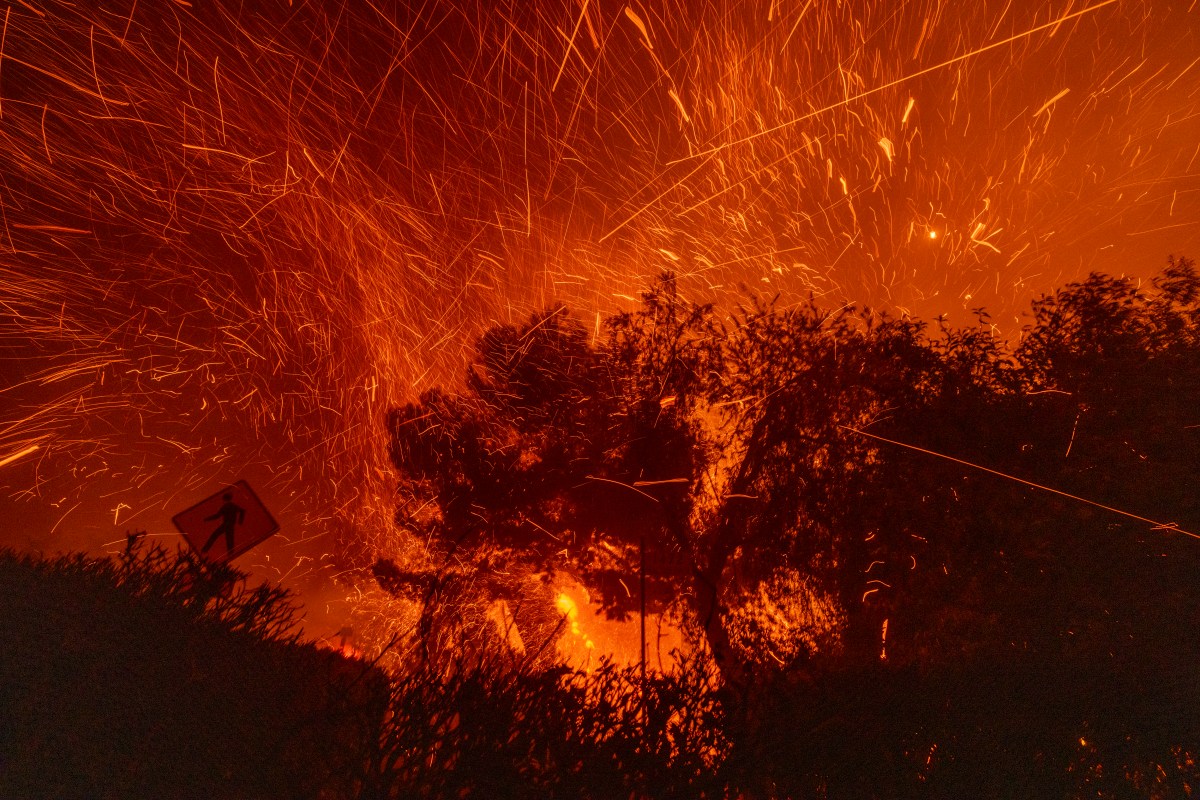Black-and-white imagery can often capture the raw emotions of people as vividly as color, helping to sear into the public consciousness the importance of events — particularly the movement for equal rights.
The Dyke March, which first took place in the 1990s, is among the many events this Pride weekend not only celebrating LGBTQ+ rights, but also continuing the march toward greater equality for all Americans regardless of their sexual orientation. This year’s march took place on Saturday, June 19, and I yearned to show the connection between this year’s event and equal rights marches of the past by viewing it through a lens that’s nearly 50 years old.
With a Polaroid SX70 in hand, I followed thousands of protesters striding, and sometimes dancing, down Fifth Avenue. Delicately turning the focus wheel to bring demonstrators blocking traffic into sight and snapping an image that could have been taken decades prior exhibited the heritage the protest is continuing to champion.

The Dyke March is a celebration of lesbian and trans rights, and its centerpiece is the proliferation of activism — comparatively to the 1969 Stonewall Riots that led to the creation of the Pride March.
Beginning in the early 1990s, the Dyke March looked to thrust women into the spotlight in what was, at the time, a more male-dominated scene and was held with civil disobedience in mind, according to NYC LGBT Historic Sites Project.
“This is a civil disobedience action. We feel it’s our right to march. The Pride march is great, but lesbians have specific rights we need to march for… We need our own space,” Christina McKnight, member of the Lesbian Avengers, said in 1997.
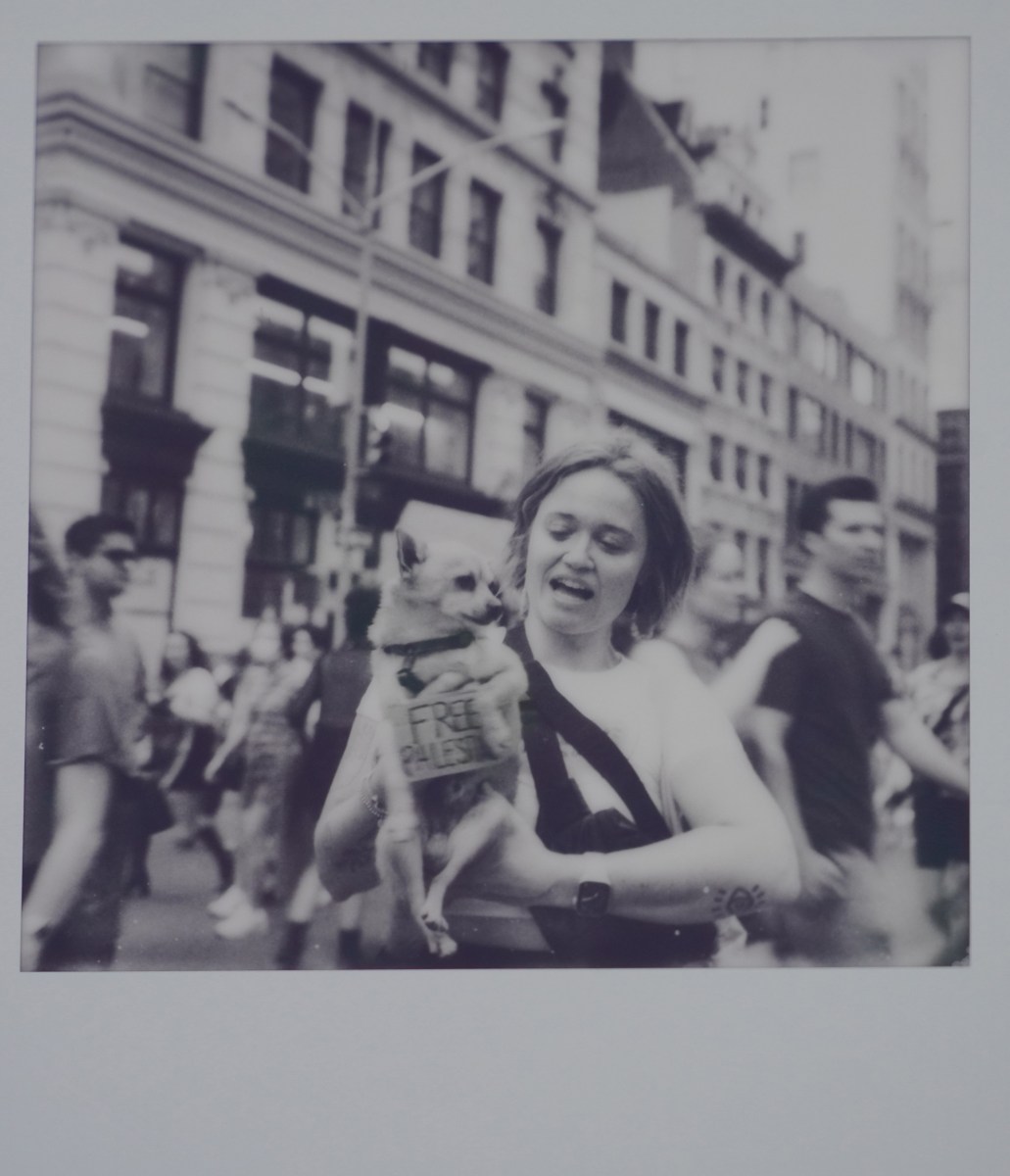
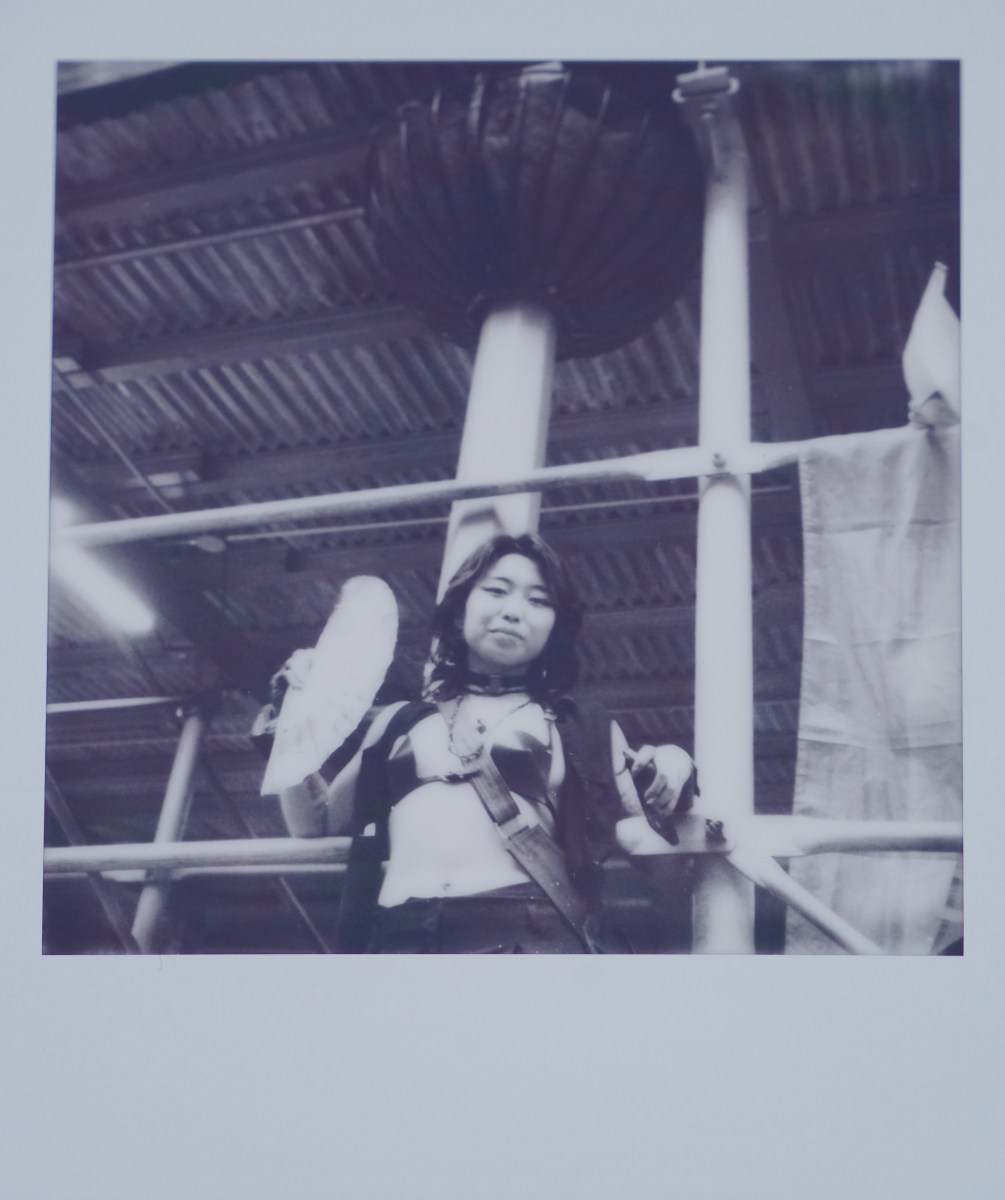
Throughout the years, the march has grown to embrace the ongoing fights for equal rights of the current era — including the ongoing attack on the rights of transgender Americans and beyond.
In 2024, the movement also looked to include the voice of Palestine as many civilians are caught up in the ongoing Israel-Hamas War since the Oct. 7, 2023 terrorist attacks.
As I snapped images of the march with this vintage Polaroid, I realized that history and the present merged. Capturing moments such as a woman scaling scaffolding or a protester trading verbal jabs with a traffic cop through a vintage lens showed that although the causes have changed, the form of public protest to bring attention to them has often remained the same year after year.
There is a sense of tangible history when capturing these moments on instant film, cementing that this Dyke March’s legacy is a part of a movement that will continue to pave the way for change.
Each image represents a fact that, when it comes to the constant battle for equal rights, we remain frozen in time in one sense — while in another, we realize that the human spirit will carry on the struggle until equality is won.
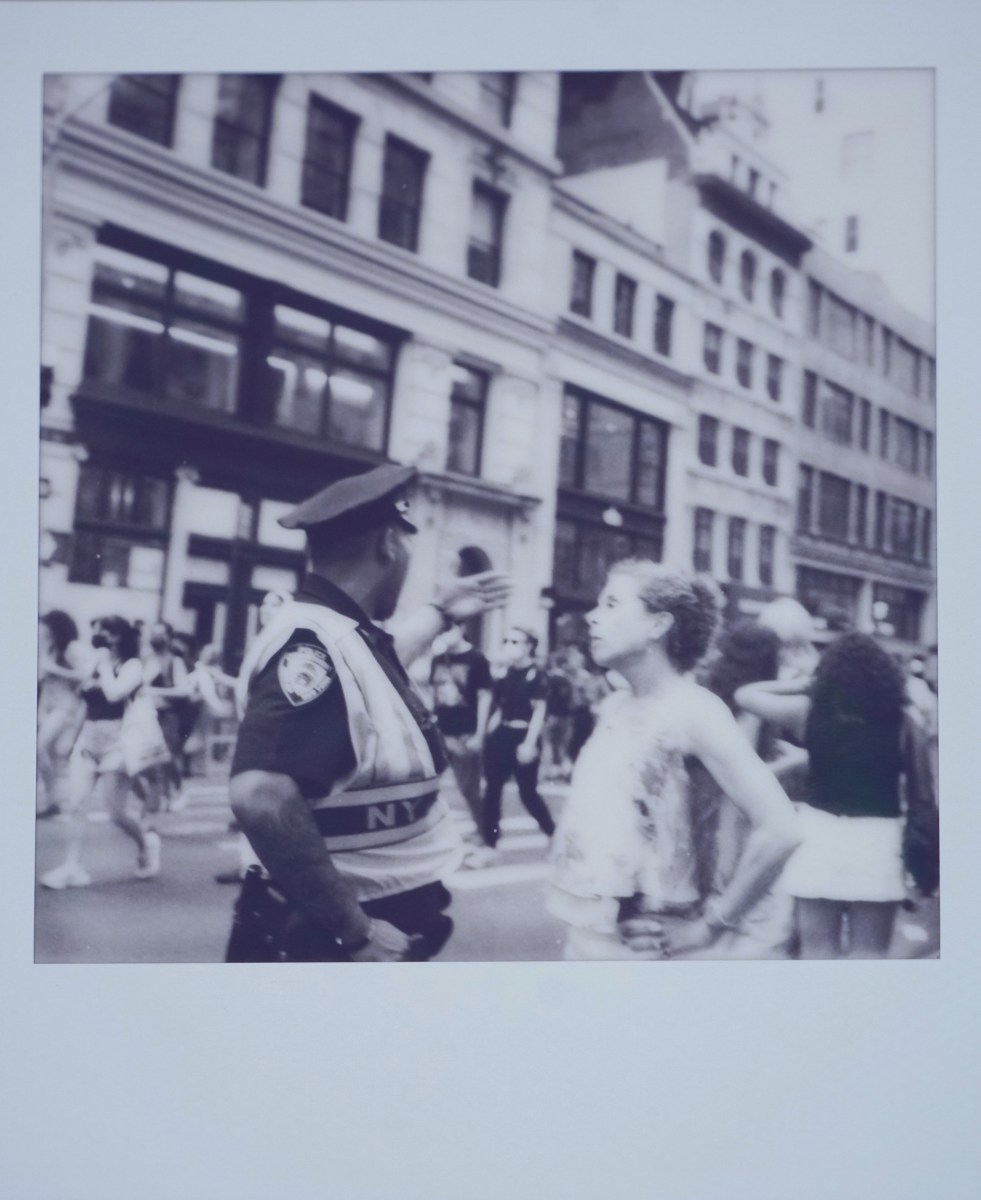
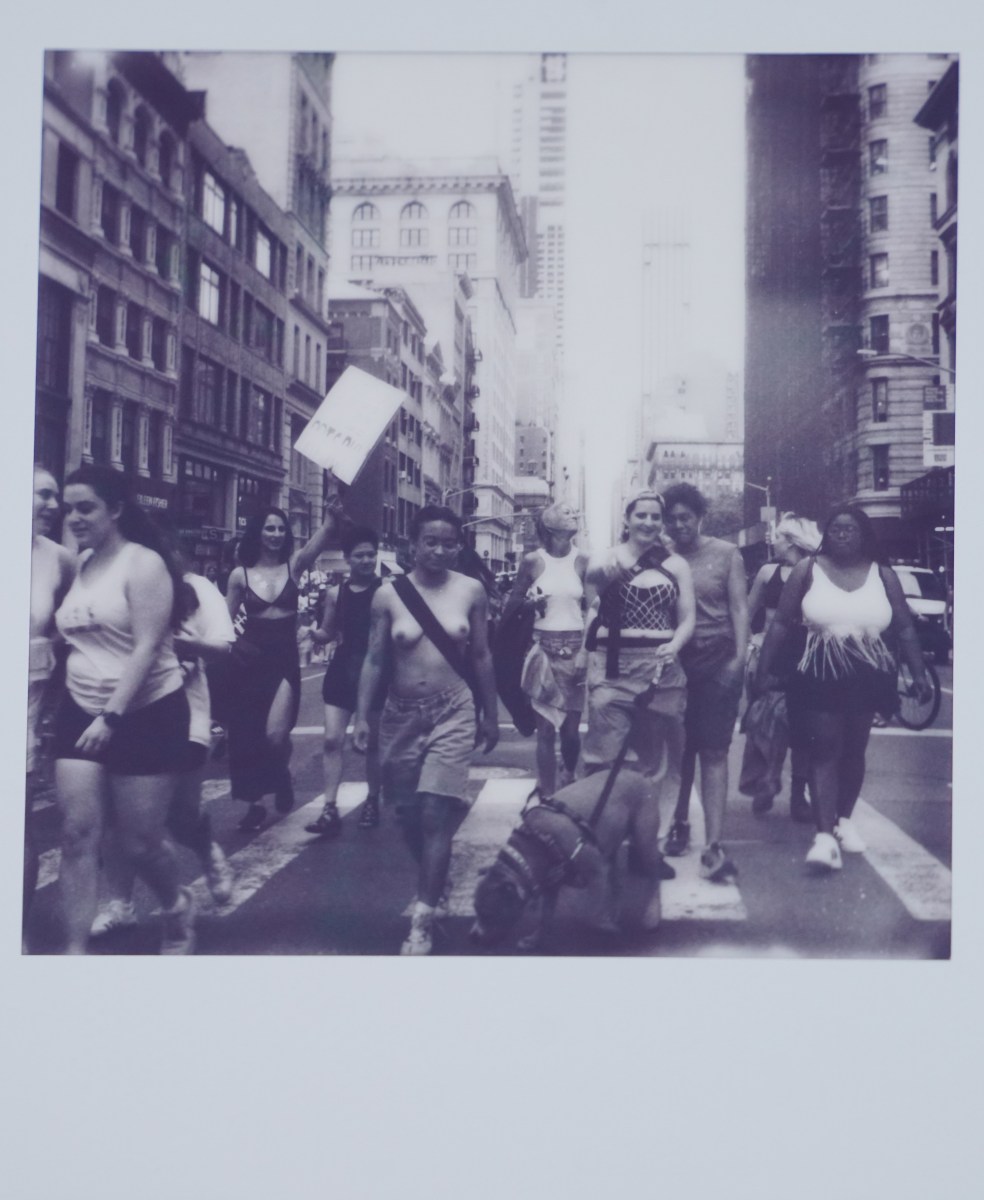
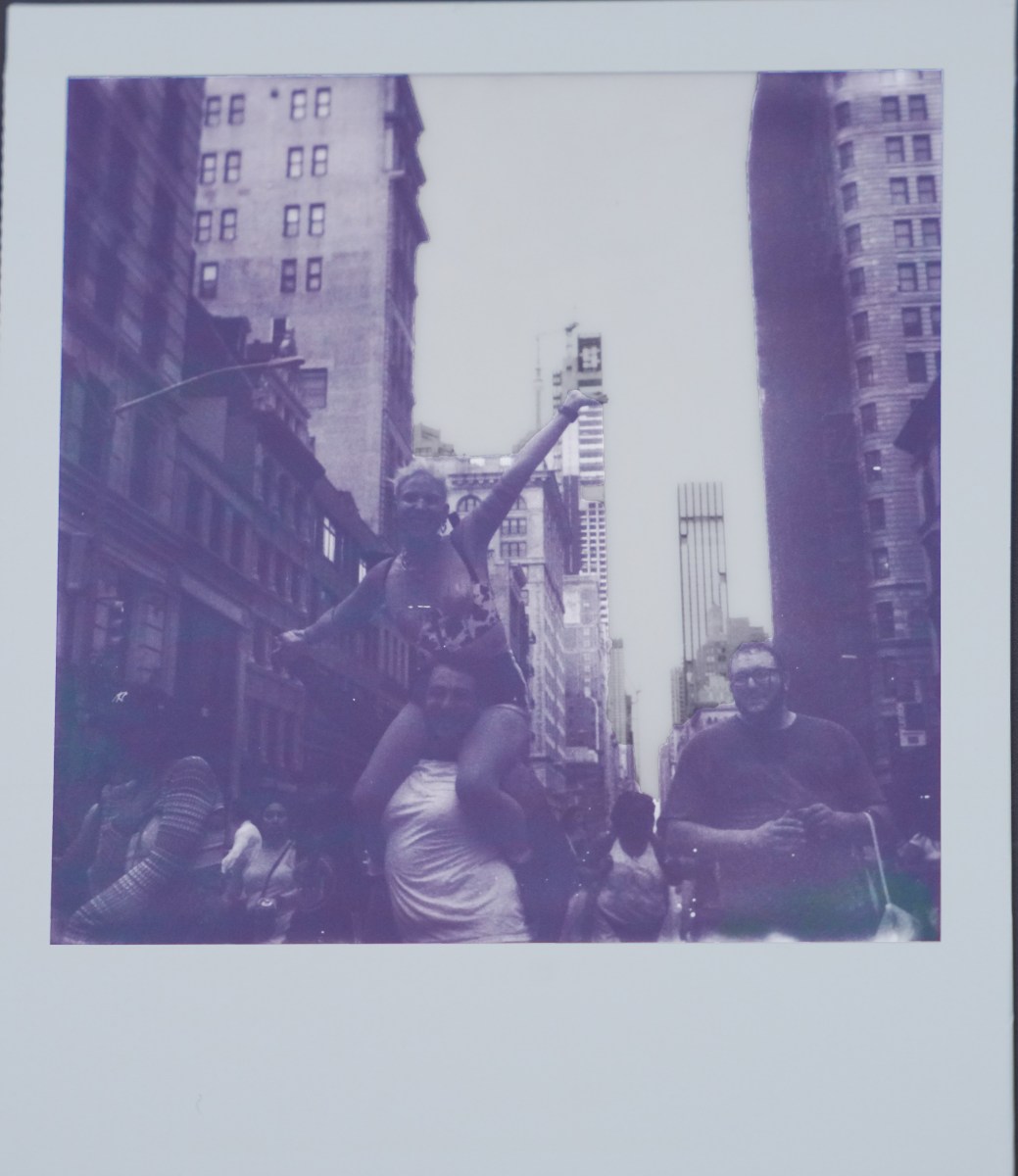
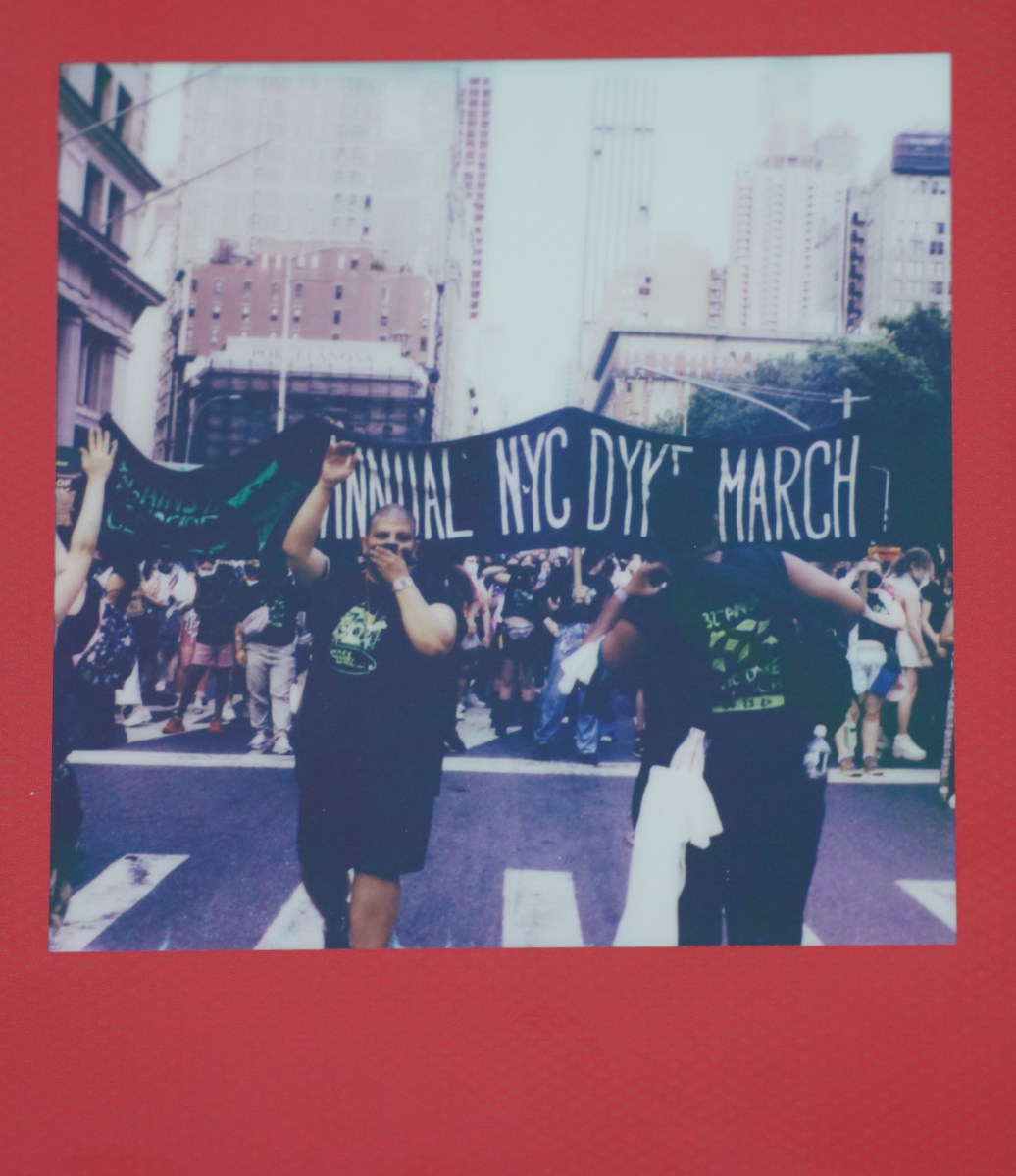
Read more: Rent increase for stabilized apartments concerns NYC renters.



